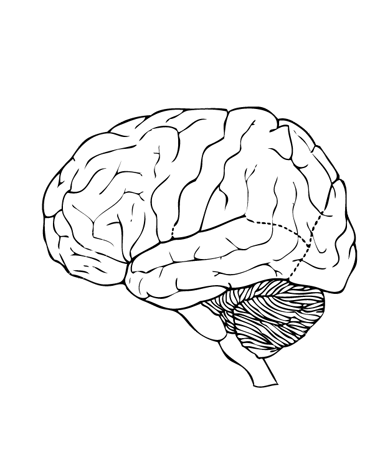Brainwave Music LAB
Suomeksi
Most creatures of the animal kingdom possess a structure called the brain, which is arguably among the most important organs also in humans. The brain controls all the important aspects of our daily life and humanity as we understand it would be entirely inconceivable without the brain. For example, when a person walks down the street happily whistling a tune, a very large number of simultaneous processes occur in the brain. Movements of the limbs, seeing what there is on the street, producing the whistle and imagining the tune are all brain controlled. In addition to these perhaps obvious examples, the brain controls the secretion of hormones, sleep, our long-term goals and even love and affection.
Brain is a very complex structure that weights around 1.4 kilos in adult humans. Even though distinct brain areas control different functions the same building blocks work everywhere in the brain. Nerve cells or neurons constitute the basic information processing units of the brain and a normal human brain contains about 100 billion neurons. It is good to remember that all the neurons in the brain are very stupid and entirely incapable of doing anything smart like contemplating the taste of beer or composing a musical masterpiece. However, when neurons communicate in an interconnected network, interesting entities such as thoughts, may sometimes arise.
Communication in neural networks is based on stereotypical electrical events called neural impulses. All information processing in the brain depends on single neurons sending and receiving neural impulses. If a neuron receives large enough number of neural impulses it generates an impulse itself. The generation of these impulses relies on chemical substances called neurotransmitters and the electrical properties of atoms inside and outside the neurons.
Neural impulses are extremely weak in terms of electrical potential (~50 mV), and do not produce anything detectable outside the scull. However, when a large number of nerve cells produce neural impulses in synchrony, the concerted action of the neurons creates tiny electrical potentials outside the head. These potentials form the basis of brain waves that are measurable using a technique called electroencephalography (EEG).
Recall that different parts of the brain are responsible of different kinds of processes. For example, when a person is observing a dancer on the stage, or sensing the tickling of a feather, different sets of neurons produce synchronous impulses. Consequently, the pattern of brain waves in EEG differs and this information can be used for research purposes or as our group does, to control the musical ambience.
